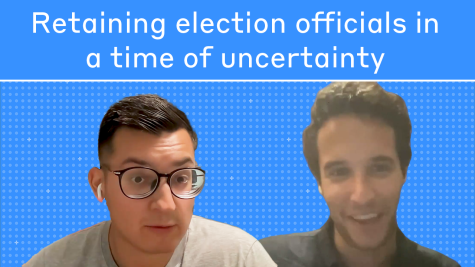The Cost of Ranked Choice Voting
The MIT Election Data and Science Lab helps highlight new research and interesting ideas in election science, and is a proud co-sponsor of the Election Sciences, Reform, & Administration Conference (ESRA).
Christopher Rhode recently presented a paper at the 2018 ESRA conference entitled, “The Cost of Ranked Choice Voting.” Here, he summarizes his analysis from that paper.
In democratic countries such as the United States, elections are crucial to the continued prosperity of both its government and the lives of the people who comprise it. Unfortunately, regular phenomena such as noncompetitive and gerrymandered districts, winner-take-all contests, unnecessary runoffs, and plurality winners have detracted from the effectiveness of elections. Consequently, elections have become increasingly unreliable at selecting policymakers who are representative of and supported by their constituents.
One approach to addressing this problem has been through changing the framework of elections themselves. In theory, alternative voting methods like ranked choice voting (RCV) offer a solution to some of the problems that have plagued our democratic process. While some academic focus has been given to the theoretical merits of alternative voting methods, many of the tangible aspects have gone overlooked. Elections administrators have been left without the essential knowledge necessary to effectively plan for and implement these types of election reforms. This study was designed to determine whether implementing RCV methods at the local level is responsible for increases or decreases to the cost of elections within the municipalities that have implemented it.
Elections cost data were obtained from seven local governments that switched to RCV between 2004 and 2011. Similar data were also obtained from seven control municipalities that used traditional voting methods such as plurality primaries or majority-rule votes. These localities were intentionally chosen for their similarity to the corresponding RCV cities on metrics such as population, annual budget size, location, election cycle schedule, jurisdiction in charge of elections, and political makeup of its citizens. Cost data were sought for all elections within a time period of ten years before and ten years after RCV was first implemented. These costs were then aggregated into standard two-year election cycles in order to control for the natural variances in election spending associated with election cycles. They were also converted into per-capita costs so that direct comparisons could be made between municipalities of vastly different sizes.
The elections were separated into three categories for analysis: before, during, and after the implementation of RCV. This allowed two different difference-in-difference regressions to be run in order to identify whether RCV was responsible for cost changes either during or after it was implemented. This regression showed that cost changes both during implementation and thereafter were only slightly varied from what would be expected without RCV, and both were well inside established margins of error. The observed cost differences during and after implementation are not statistically significant.
For this reason, the null hypotheses that RCV would have no effect on the cost of elections either during or after its implementation could not be rejected; this study cannot show that implementing RCV has been directly responsible for any financial savings or liabilities in the cities that have chosen to use it. However, while differences in election costs during or following RCV implementation are not found to be statistically significant, there was another interesting finding from this study. In general, RCV jurisdictions are found to spend significantly more on elections overall.
This finding was surprising: the localities that implemented RCV were found to experience costs that were substantially greater than the control cities throughout all three categories (before, during, and after implementation). In fact, these municipalities experienced election costs in excess of five standard deviations greater than would have otherwise been expected. This indicates that there is a statistically significant correlation between the cost of elections and RCV implementation at the local level.


